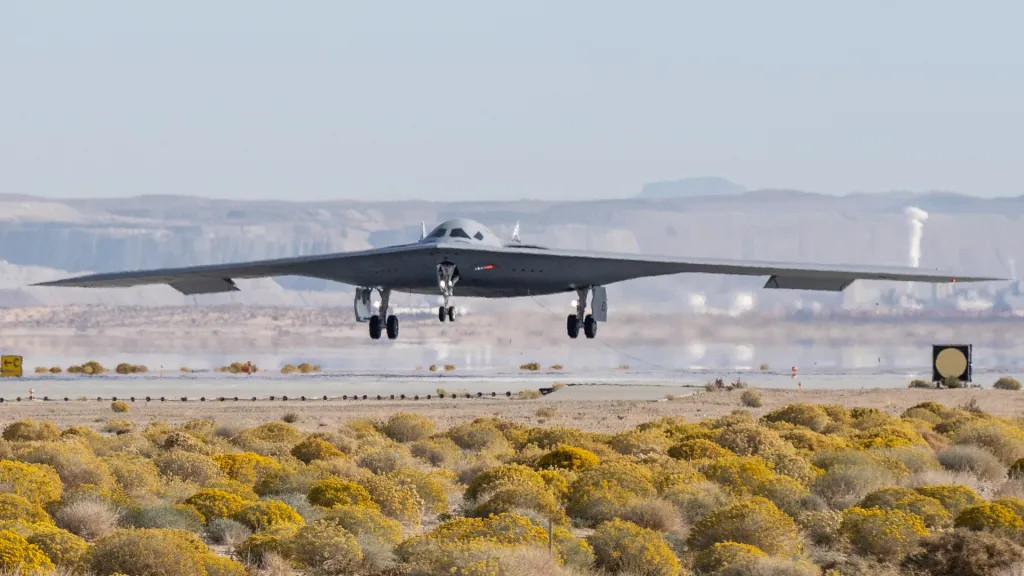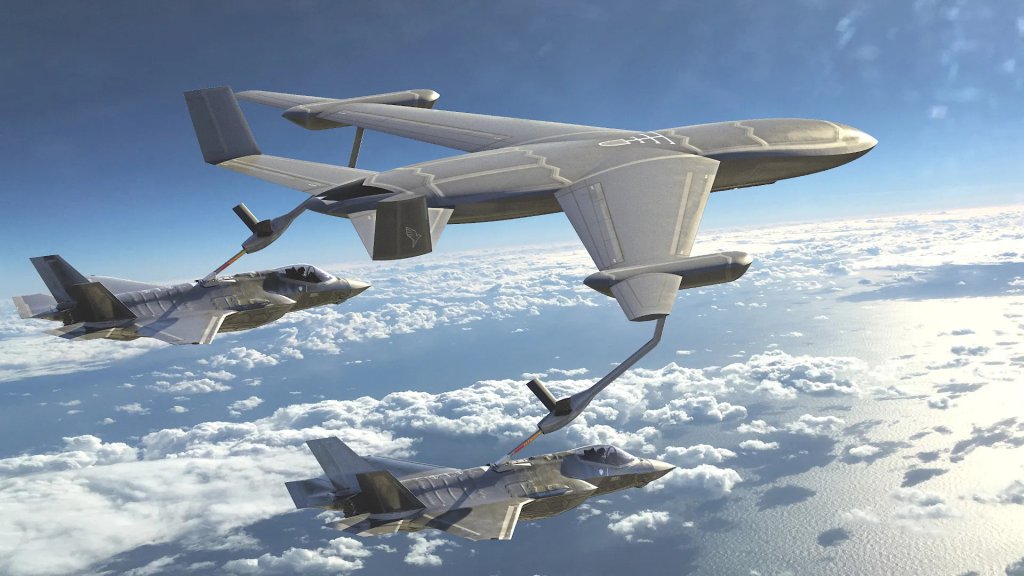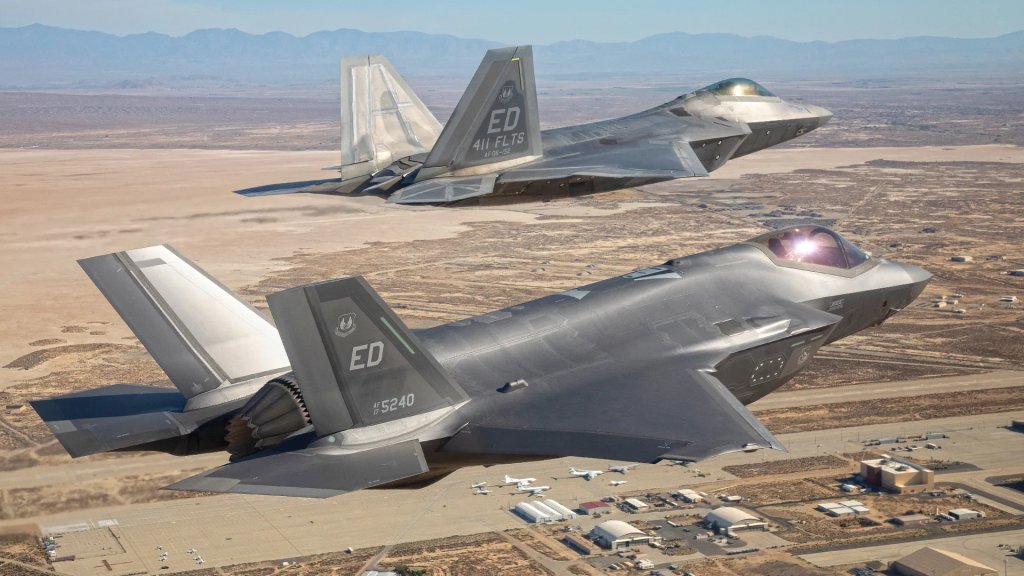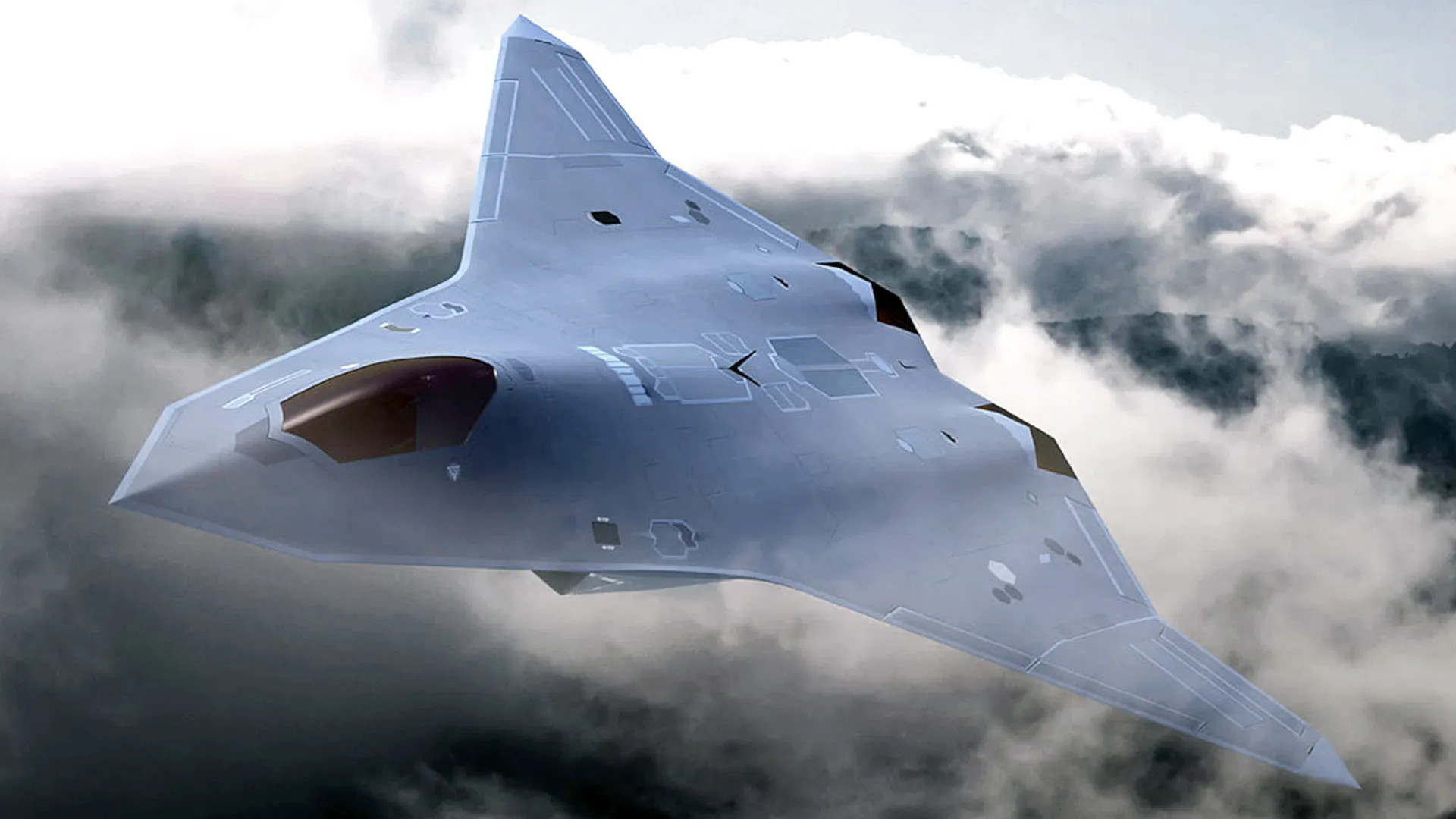A greater focus on long-range strike capabilities is among alternatives the U.S. Air Force is considering to a costly new crewed 6th generation stealth combat jet as part of its Next Generation Air Dominance (NGAD) family of systems. A lower-cost design focused primarily on acting as a ‘quarterback’ for Collaborative Combat Aircraft (CCA) drones is also still on the table, as is just continuing with the original plan, where another $20 billion would be required to complete the development process of the highly-advanced crewed tactical jet. The service has already announced it is leaving it to the incoming Trump administration to make the final decision on how to proceed, or not, based on the recommendations of a deep review of the program.
Secretary of the Air Force Frank Kendall offered additional details about alternatives to the original plan for a new 6th generation NGAD combat jet during a talk at the Center for Strategic and International Studies (CSIS) think tank today. Last year, the service announced it was putting work on the NGAD aircraft on hold and initiating a deep review of the program’s core requirements and objectives. That review is understood to be close to, if not completed.
“The Air Force [originally] wrote requirements for an aircraft that is essentially an F-22 replacement. And for the last few years, that’s what we’ve been working on,” Kendall said. “We’re now at the point where we commit to going forward, to finish design, and go into production of that, or not. And this is really the most important milestone for almost any program.”

“The alternatives to the F-22 replacement concept include something that looks more like an F-35 follow-on,” which would be “something that’s much less expensive, something that’s a multi-role aircraft that is designed to be a manager of CCAs and designed more for that role,” the Air Force’s top civilian added. “And then there was another option we thought about, which is reliance more on long-range strike.”
“People have talked about not doing another crew and aircraft. I don’t think we’re quite there yet. I think that could be considered,” Kendall continued. “We could [also] just continue to rely on F-35 and keep it going for [the] foreseeable future and focus on CCAs. I’m not quite ready to do that personally.”
Air Force officials, and Kendall in particular, have repeatedly highlighted the potential of supplanting the current NGAD combat jet plan with a lower-cost design centered more specifically on managing CCAs. The forward drone controller route could mean an aircraft maximizing fuel and networking capacity with weapons and sensors distributed across the uncrewed platforms it manages. This, in turn, could make for a less expensive and smaller jet. TWZ previously explored what such a design might look like in a very detailed feature you can find here.
Last October, Air Force Chief of Staff Gen. David Allvin mentioned the potential of the B-21 Raider stealth bomber possibly taking on more roles and missions as a result of the review of the NGAD combat jet plans. The B-21 is already set to be capable of performing a wide variety of missions in addition to long-range strike, including battle management and intelligence, surveillance, and reconnaissance (ISR).
It’s also worth noting here that, while it is not clear if Kendall was referring to this directly today, long-range strike is also a term of art within the Air Force that refers to a larger family of systems that includes the B-21. The AGM-181 Long-Range Stand Off (LRSO) nuclear-armed air-launched cruise missile is also known to be part of the LRS ‘system of systems,’ but there is more in the classified realm, all of which you can read more about here.

Increased emphasis on “long-range strike” is “something we could do in any event,” Kendall added in his remarks at CSIS. “So that’s sort of on the table, period, as an option. It’s relatively inexpensive and probably makes some sense to do more that way.”
Kendall did not elaborate more on what the long-range strike alternative to the NGAD combat jet might entail. However, after Allvin’s comments last year regarding the B-21, TWZ wrote:
“As The War Zone has explored in detail in the past, the B-21’s size, long range, high-altitude ceiling, broadband low-observability (stealthiness), and other capabilities could actually make it well suited to supporting certain forms of air-to-air combat. The Raider has the potential to serve as a launch platform for air-to-air missiles, especially outsized very long-range types. Its payload capacity would give it the ability to carry a large volume of smaller air-to-air missiles, as well. B-21s could also employ air-to-ground munitions in support of the suppression and destruction of enemy air defenses mission (SEAD/DEAD), which is also part of the air superiority equation.”
“Maybe most significantly, the B-21s could also act as airborne nerve centers in support of counter-air missions, especially for controlling drones like the Air Force’s planned fleets of Collaborative Combat Aircraft (CCA), and have the ability to do so even in the most heavily contested of airspaces. Uncrewed aircraft, in turn, could feed targeting data back to Raiders with air-to-air loadouts. B-21s might even be able to launch some of those drones themselves.”
More focus on long-range strike could also be tied to broader reconceptualization of what air dominance looks like for the U.S. military as a whole going forward, which Air Force officials have also hinted at previously. There are other operational factors that will contribute to any final decision on the NGAD combat jet, including new concepts of operations and tactics, techniques, and procedures regarding the employment of CCAs, as well as plans for new stealthy aerial refueling tankers.

“I see a continuing need for crewed aircraft to have reliable communications and command and control over uncrewed aircraft, and that can be done from tactical manned aircraft working with CCAs. I think that’s the model we’ll probably follow for quite a bit,” Kendall said today. “Next-generation aerial refueling. All of our longer-range aircraft based on conventional models of aircraft are increasingly vulnerable to very long-range, even ultra-long-range counter air systems, and we have got to address that survivability issue.”
When it comes to the NGAD combat jet, Kendall today otherwise largely reiterated what he has said in the past about thinking around the program. He also left the door open to the possibility of the Air Force simply continuing with its original plan, something he has done previously.
“Two things made us rethink that platform. One was budgets,” the Air Force’s top civilian explained. “Under the current budget levels that we have, it was very, very difficult to see how we could possibly afford that platform. We needed another 20 plus billion dollars for R&D [research and development], and then we had to … start buying airplanes at a cost of multiples of an F-35 that we were never going to afford more than in small numbers.”
How much the Air Force has already spent to date on the NGAD combat jet program is unclear. A formal competition has been ongoing since 2023. The service asked for $276 million and $815 million in Fiscal Years 2024 and 2025, respectively, for risk reduction and other development work. That was part of requests for just over $1.9 billion and nearly $2.75 billion in funding in those fiscal cycles for the entire NGAD initiative. Classified funding streams and money spent on supporting efforts over the past decade, including ones that produced flying demonstrators, are also part of the equation. It’s also worth noting that the F-22 program cost around $70 billion in total, of which some $30 billion was for initial non-recurring research and development.
The Air Force has also previously laid out a plan to buy around 200 of the new NGAD jets, in line with replacing the similarly-sized F-22 fleet. Kendall has said in the past that each one of the aircraft could cost three times the average unit price of an F-35 Joint Strike Fighter, or upwards of $300 million based on publicly available information.

“And then, the operators in the Air Force, senior operators, came in and said, you know, now that we think about this aircraft, we’re not sure it’s the right design concept. Is this what we’re really going to need?” Kendall added. “So we spent about three or four months doing analysis, bringing in a lot of prior Chiefs of Staff and people I’d known earlier in my career who I had a lot of respect for, trying to figure out what the right thing to do was.”
“At the end of the day, the consensus of that group was largely that there is value in going ahead with this, and there’s an industrial base reasons to go ahead, but there are other priorities that we really need to fund first,” according to Kendall. “So this decision ultimately depends upon two judgments. One is about, is there enough money in the budget to buy all the other things we need and NGAD? And is NGAD the right thing to buy?”
Kendall made clear last year that he was concerned about the ability of his service to afford the NGAD combat jet, as well as a second tranche of CCAs and new stealthy aerial refueling tankers while also having to pay for other critical priorities, like the B-21 and the Sentinel intercontinental ballistic missile. The Air Force secretary has explicitly cited Sentinel’s ballooning costs as a key driver behind the review of plans for the NGAD aircraft.

“I have no idea right now whether the Trump administration that is coming in is going to increase defense budgets or decrease them,” he added toward the end of his talk at CSIS today. “Hopefully somebody does, and hopefully there’s some planning being done consistent with that, but I don’t know the answer to that question right now.”
Whatever it decides, the incoming Trump administration looks set to be presented with a significant array of options, including an increased emphasis on long-range strike capabilities and a lower-cost F-35 successor-like jet, as alternatives to the original NGAD combat jet plan.
UPDATE: 6:30 PM EST —
Andrew Hunter, Assistant Secretary of the Air Force for Acquisition, Technology & Logistics, has also now described the U.S. military as being in a “race” with China when it comes to 6th generation air combat capability in an interview with Breaking Defense published today. He did also stress that the Air Force’s “technical advantage” remains “meaningful and that our system is producing good materiel.”
“It’s fair to say we pay a lot of attention to what the Chinese are doing. And so, not everything that becomes public is a shock,” Hunter added, referring to the emergence of two previously unseen Chinese stealthy combat jets in December. “But having said that, their pace is incredibly fast.”
“So [the] IOC [initial operational capability] date on something, they may well beat us on that. I think we’ll have the better capability, but we certainly have no time to lose,” he continued. “They could beat us to the punch.”
Contact the author: joe@twz.com
